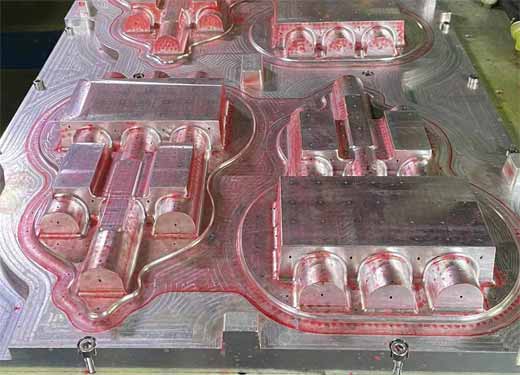Definition of pulp molding die CNC machining
Pulp molding die CNC machining is a manufacturing process that uses computer numerical control (CNC) machines to create precision molds for pulp molding products. This process involves the use of specialized software that controls the movement of cutting tools to shape the die according to specific design specifications. The result is a highly accurate and consistent mold that can be used for the production of various pulp molding products such as egg trays, fruit trays, and disposable tableware.
The importance of CNC machining in pulp molding die manufacturing cannot be overstated. This technology allows for the creation of high-quality molds that meet the demands of the modern market. In this article, we will explore the benefits and applications of pulp molding die CNC machining.
Advantages of Pulp Molding Die CNC Machining
Pulp molding die CNC machining offers several advantages over traditional die cutting methods. Some of these advantages include:
A. Precision and accuracy in die cutting: CNC machines can cut with a high degree of accuracy and precision, which is important for creating pulp molding dies that have a consistent shape and size. This precision is especially important for creating complex die shapes and intricate designs.
B. Efficient use of materials and reduced waste: CNC machines can optimize the layout of the die design to minimize material waste, resulting in a more cost-effective and sustainable manufacturing process.
C. Versatility and flexibility in die design and customization: CNC machines allow for greater design flexibility and customization options. Design changes can be made quickly and easily, allowing for faster iterations and improved product development.
D. Increased production speed and throughput: CNC machines are capable of producing pulp molding dies at a faster rate than traditional die cutting methods. This increased speed and throughput can help manufacturers meet demand and reduce lead times.
CNC Machining Techniques for Pulp Molding Dies
CNC machining techniques have revolutionized the manufacturing industry, offering increased accuracy, efficiency, and speed in die cutting. In pulp molding, CNC machining has become the preferred technique for die manufacturing, allowing for the creation of complex and customized die shapes with ease. Here are some CNC machining techniques commonly used in pulp molding die manufacturing:
A. Computer-aided design (CAD) software: CAD software is used to design the die in a digital format, allowing for precision and accuracy in die shape and size. This software enables designers to create complex 3D models and simulate the die-cutting process before the actual manufacturing begins.
B. Computer-aided manufacturing (CAM) software: CAM software is used to program the CNC machine and convert the digital design into a physical die. This software generates the machine instructions that control the movement and cutting of the CNC machine.
C. Multi-axis machining for complex die shapes: Pulp molding dies often require complex shapes that cannot be produced with conventional 2-axis or 3-axis machining. Multi-axis machining, such as 5-axis machining, allows for the creation of intricate and irregular shapes with high precision and accuracy.
D. High-speed machining for faster production: High-speed machining techniques can significantly reduce the manufacturing time of pulp molding dies. These techniques involve the use of high-speed spindle motors and advanced cutting tools that can increase cutting speeds while maintaining precision and accuracy.
Materials Used in Pulp Molding Die CNC Machining
CNC machining for pulp molding die manufacturing requires the use of high-quality materials to ensure precise and accurate die cutting. The following are some of the materials commonly used in pulp molding die CNC machining:
A. Aluminum Alloys: Aluminum alloys are a popular choice for pulp molding die manufacturing due to their high strength, lightweight, and excellent machinability. They also have good thermal conductivity, making them ideal for hot pressing applications.
B. Stainless Steel: Stainless steel is another commonly used material for pulp molding die CNC machining due to its high strength, durability, and resistance to corrosion. It is often used in the production of complex and intricate die shapes.
C. Tool Steel: Tool steel is a popular material for pulp molding die manufacturing due to its high hardness, wear resistance, and toughness. It is often used in the production of dies that require high precision and accuracy.
D. Other Specialized Materials: In addition to aluminum alloys, stainless steel, and tool steel, other specialized materials are also used in pulp molding die CNC machining, depending on the specific application. For example, some applications may require the use of ceramics or carbon fiber composites due to their unique properties, such as high temperature resistance or electrical conductivity.
